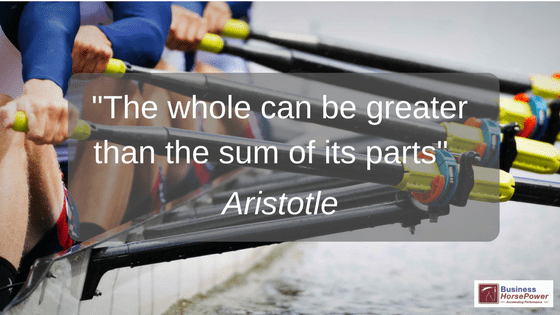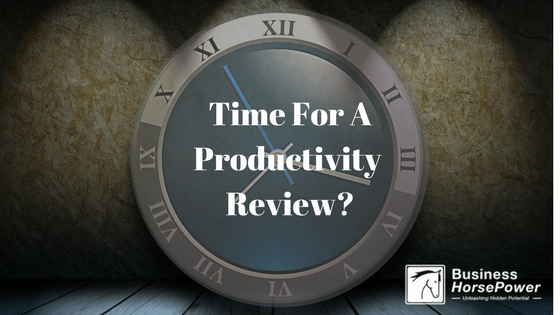
by Julia Felton | Apr 21, 2019
We’ve all been there: you walk into a room, and the atmosphere bristles with something unpleasant. You can’t quite put your finger on it, but there’s a tension in the air and the people working don’t seem happy.
Of course, the problem might be in your head. More likely, you are seeing employee disengagement and low spirits playing out across the office space.
Today, we’re investigating how much the physical office space affects employees’ wellbeing and morale and considering ways to improve it.
Different types of wellbeing
There are different types of wellbeing, and understanding each one is pivotal to creating a safe and productive workplace for your employees. The three types are:
- Physical wellbeing, which relates to how employees move through the space and stay energised. It also speaks to their physical posture when sitting or standing at their desk
- Cognitive wellbeing, which is about your staff recharging their energy, or finding physical space where they can concentrate deeply and come up with new ideas, and
- Emotional wellbeing, which is all about creating connections between employees and your company, so your staff feel happy coming to work.
Your workplace can be redesigned to suit all three of these areas, and address these different facets of your employees’ lives. Let’s breakdown the categories a little further, and explore how they relate to wellbeing, satisfaction and engagement.
1. Physical
Moving around throughout the day can shake off feelings of lethargy. Likewise, moving around promotes positive endorphins and boosts concentration.
Create a series of spaces around your workplace that employees can shift to throughout the day. While they should have their own desk somewhere in the office, they should also have the option of moving to common areas, couches and standing workspaces as they wish.
2. Cognitive
Modern work dictates that we should be always on, which means our brains are always seeking notification and reinforcement. Designate some ‘quiet zones’ in your office where people can retreat to if they want to recharge or deeply concentrate. These areas should be distraction free, to allow your staff to focus if they need.
3. Emotional
The emotional metric relates to our need for privacy, when we want it. Ensure your employees have somewhere they feel themselves; and once again, somewhere they feel like they won’t be distracted.
Also take into account that sometimes your staff will want to be social, and give them communal spaces to do this.
What does this mean?
On the surface, these metrics don’t directly relate to the physical landscape of your office – but if you dig a little deeper, you’ll see that the way you lay out the space your employees work in can directly affect the way they perform. Put someone in a space that doesn’t match their personality, work style or preferences and they’ll become unproductive. Allow them the freedom to choose their own work environment – or shift between multiple environments throughout the day – and you’ll have a stronger, more engaged workforce.

by Julia Felton | Feb 28, 2018
“Make trust an integral part of your professional relationships—or kiss success goodbye”.
Recently I ran a workshop all about the art of communication and how only by communicating effectively can you seek to build great relationships. These relationship, whether in your personal or work life, are essential if you are to succeed. How often have you seen a potential client purchase from someone else even though you had a better product or could offer a better service? I see this all the time and the reason it happens is that people buy people. We trust people that we have formed rapport with and with whom we have a great connection.
And it was no different on our workshop. The delegates experienced the most success when they were able to drop into horse-time and really spend time connecting with the horses. From this place of deep connection trust built which eventually led to them developing a magical partnership. A true win-win situation where the horses walked freely around the arena with my clients, with no ropes or constraints. So why did they walk with the client out of their own free will? Because they trusted my clients and felt safe. There was the right mix of trust and respect in the relationship which meant that both parties showed up fully present and were engaged in having a meaningful connection.
The insights for our clients was immense as they fully experienced, often for the first time, how true connection really feels and how it impacts each party. How it is reliant on a combination of trust and respect and how when you have have great connection the horse (or a potential client) will want to be with you and follow you. No more sales conversations required! How engagement for both parties improves when trust is present.
Trust is everything, especially if you are leading another person, a team or a company toward a shared goal or mission. Without a credible reputation, your followers will be hesitant, uncomfortable and unsure of whom they’re really following. And that insecurity, that lack of confidence, can crumble the loyalty and united support that’s vital in an organisation’s success.
So how do you become trustworthy? Remember, good intentions are just the beginning. Here are 15 ways to build and strengthen your credibility as a leader, adapted from Follow Your Conscience by Frank Sonnenberg, author of Marketing to Win and Managing with a Conscience.
1. Show people that you care about their needs.
2. A promise should be as binding as a contract.
3. Never sacrifice a long-term relationship for a short-term gain.
4. Don’t expect people to look up to you if you look down on them.
5. Give credit where credit is due.
6. The danger of shooting from the hip is hitting yourself in the foot.
7. Take the time to provide the rationale behind your recommendations.
8. Be objective.
9. Stand up for the things that you believe in. (Waffles are for breakfast.)
10. Never ask someone to do something that you’re unwilling to do yourself.
11. Your actions must match your words.
12. Think before you open your mouth.
13. You gain more by making others look good than by singing your own praises.
14. Words spoken in confidence are words spoken in trust.
15. Few people will fault you for being tough, if you’re fair.
So what are you doing to build trust and create deep, meaningful relationships? How are you staying connected to your tribe? What are you giving to the relationship with no expectation of return? What can you do to build better relationships and connection today?
Your investment in building relationships will repay itself 10x over, if you just invest the time and energy to truly connect.

by Julia Felton | Jul 26, 2017
How come some teams are successful and others aren’t? I’m sure we’ve all been in teams that work well and other teams that don’t, and if you’re like me being in a dysfunctional team is super frustrating. So what are the traits of high performance teams and how do we ensure that any team we are part of adopts these traits.
Google was inspired to conduct some research to codify the secrets of team effectiveness and to examine why some teams excelled whilst others fell behind, and what they discovered surprised them. .
Before this study, like many other organisations, Google Execs believed that building the best teams meant compiling the best people. It makes sense. The best engineer plus an MBA, throw in a PhD, and there you have it. The perfect team, right? However, in the words of Julia Rozovsky, Google’s people analytics manager, “We were dead wrong.”
Eager to find the perfect mixture of skills, backgrounds, and traits to engineer super-teams, Google put together a team of statisticians, organisational psychologists, sociologists, engineers, and researchers to help solve the puzzle. Over a two year period they studied 180 Google teams, conduct 200-plus interviews, and analysed over 250 different team attributes. However, at the end they still had no clear pattern of characteristics that could be plugged into a dream-team generating algorithm.
This is because they initially failed to consider the behaviours of the group and how that impacted the collective intelligence of the team. It seems that the dynamic of how the team moves through the cycle of form – storm – norm – perform is pivotal to the ultimate success of the team.
I’m sure you’ve heard the quote by Aristotle, “The whole can be greater than the sum of its parts” and intuitively we all know that two heads are better than one but it is how these two heads collaborate and inter-act together that determines the success of the group. Great teamwork is not based on individual brilliance but rather on the dynamic and relationships that exist between the team members.
So here are the five traits of a high performing team that Google eventually identified:
- Dependability – Team members get things done on time and meet expectations.
- Structure and clarity – High-performing teams have clear goals, and have well-defined roles within the group.
- Meaning – The work has personal significance to each member.
- Impact – The group believes their work is purposeful and positively impacts the greater good.
- Psychological Safety – An environment where opinions are listened to and team members feel heard
I’m sure we’ve all been in meetings and, due to the fear of seeming incompetent, have held back questions or ideas. I know I have. It’s unnerving to feel like you’re in an environment where everything you do or say is under a microscope. But imagine a different setting, a situation in which every team member feels safe to take risks, voice their opinions, and ask judgment-free questions. A culture where managers provide air cover and create safe zones so team members can let down their guard. That’s psychological safety.
Reviewing these five traits we can see that team success is as much to do with the team dynamics and the business culture as with individual skill sets. In an age where teamwork is becoming increasingly important to respond to the uncertain world in which we live, the need to hire team members that are a good cultural and values fit is essential. Just imagine the impact of having someone in your team who is not aligned with the other team members. Not only do they feel uncomfortable but they also impact the harmony of the group, and in the worst situation can negatively impact the entire team. John Maxwell refers to this as the “law of the bad apple” and if not dealt with swiftly can cause silo mentality to develop within the team.
It is also interesting to note that the research highlighted that high performance teams feel like they are making an impact. In other words the team is purpose-driven. They exist to create an impact that this bigger then themselves and have some broader influence on the world. Increasingly, I am coming across more and more people who are more consciously aware of their impact and want to be part of something that is making a difference in the world. After all, in many ways we all want to make a contribution and be in service to others, as that just fulfils one of our basic human needs.
What contribution do you want to make and how does that impact how you show up in a team? If you’d like to explore what your purpose is and how you can make a real difference in the world, then let’s have a powerful conversation, as I know when I unlocked my purpose it made a massive difference to my own self-worth and business success.

by Julia Felton | Jun 28, 2017
With the first six months of the year very nearly completed, are you on track to achieve all your goals for 2017? If not maybe its time for a productivity review to assess what you are really doing every day. Are you spending time on high value income producing activities everyday, or are you getting distracted by the loads of important and urgent tasks that come across your desk, and into your email box each day.
I’ve spent the first half of the year honing my productivity skills with a mentor and it has been time well invested. I now have a new approach to how I block and tackle my days. I’m now achieving more and also having more fun doing it. So here are some tips to get you back on track.
- Take stock of where you are. You need to know where you are right now and where you want to get to in order that you can figure out the next step. Just think about it. If you are in Paris and you have no idea of where you want to visit, it doesn’t matter what directions you are given, they won’t get you to where you wnat to go. However, if you are in Paris and know you want to visit the Eiffel Tower then with some good help and advice someone can show you where you are the range of options to get there. A mentor can do just the same for you in your business, showing the plan to help you achieve your results based on where you are right now.
- Keep track of your most important commitment—the one you make to yourself. Productivity guru David Allen, author of Getting Things Done, contends that commitments to yourself are qualitatively different than those you make to others because your conscious mind can essentially “lose track” of them. While your boss will remind you of your commitments to her, your mind doesn’t know your email address. What Allen calls your “mental RAM” will continue to expect those commitments to be fulfilled, but you may have forgotten about them amidst the clamour of your work life. The result is the worst kind of stress, because you feel the pressure but you can’t quite figure out where it’s coming from. In his most recent book, Ready for Anything: 52 Productivity Principles for Work and Life, Allen offers several effective tips for capturing these “open loops” and closing them, either by completing, canceling or renegotiating them.
- Practice saying “No.” Do you find that your work has bled almost seamlessly into your personal life? One of the answers to this problem is often the word, “No.” You have to acquire the skill to utter that magic word in order to create some boundary around your work and create the opportunity for personal relaxation and renewal. The key is to steadfastly turn down obligations unless they further your priorities.
- Invest in your health. This goes without saying, right? Actually, for most of us, it also goes without doing. Yet, apart from the obvious benefits of better health, increasing your physical well-being can yield tremendous benefits in terms of your productivity at work. In the view of Jim Loehr and Tony Schwartz, authors of The Power of Full Engagement, it is managing your energy—starting with your physical health, including diet, sleep and exercise—that is more important than managing time in improving your personal productivity.
- Protect your mornings. Author and motivational speaker Brian Tracy refers to the “magic hour” after you get up—a time to protect yourself from the news and other distractions and concentrate on your day: What you are going to accomplish and exactly how you are going to do it. Many experts report that most people are naturally more creative and energetic in the mornings, which is an argument for applying yourself to your most challenging tasks then and saving the routine housecleaning until later in the day, one of the notions at the heart of the Morgenstern’s Never Check Email in the Morning.
- Pick a system—any system—just pick one. How many different places do you squirrel away information? Email? Yellow pads? Daily planner? PDA? Post-it Notes stuck like a yellow halo around your computer screen? It might take a serious investment of time to sort through the options, but decide on one…and then use it. Each of the productivity experts referenced here, and the hundreds of others in the bookstore, will claim their system is the best. But most of them also acknowledge that any system that you actually use is going to be better than no system or the chaotic structure that so many of us have fallen into. As Allen puts it, in choosing an organiser, whether high-tech or a stack of 3×5 cards, go for “simplicity, speed and fun.”
- Fun? Wait, did you say “fun”? Another important tune-up is to get reconnected with what’s happening to your personal life. Maintaining your personal relationships, relaxing and—gasp!—having fun are critical to your mental health, which, in turn, affects your energy, creativity and productivity.
But the most important tip of all is to build regular review and reflection time into your calendar. There are countless ways you can improve your productivity, lower your stress and enhance your physical and emotional well-being. But they all require some focus, some thought and some energy. The key is to treat the process of personal renewal itself as a priority. To use Stephen Covey’s classic “maintenance” metaphor, think of this as “sharpening the saw.” Schedule it. Place it in the priority queue, assign time to it, and actually give it some of your attention. Your time will be well spent

by Julia Felton | Sep 11, 2016
In my last blog I spoke about the Power of Masterminding, now I want to focus on 10 powerful reasons to join a Mastermind group.
Success in business relies on us being able to lead ourselves and become the leader of our business. In order to do that we need to master being more focused. And stop the Entrepreneurial ADD activities that plague many business owners. And to channel our ideas, turn them into action. After all action is the key to success.
One of the best ways I have discovered to do this is to assemble a virtual board of directors for your business, consisting of inspirational people like yourself who can offer advice, help you set goals and feed back on your achievements. A mastermind group is one way to achieve this as it provides you with a different perspective on any business challenges and also provides accountability and support.
Here are 10 other reasons to join a mastermind group.
- You’re no longer alone. One of the major banes of being a business owner, especially a solo-preneur is working in isolation. At times this is a glorious way to operate, at others it can be immensely frustrating. So having someone to chat over your thoughts and hopes with – and more importantly, get valuable insight into things that may or may not be good for you – is gold dust. The Mastermind Group alleviates the Lone Ranger syndrome that I so often find in business.
- You have a reason to excel. There’s no more potent motivation than having other people rooting for you, checking your progress and importantly holding you accountable for your results. Create your strategy and goals and then ask for some feedback from the other Mastermind members. They will give you an incredible different perspective on the situation and will be there to support you in achieving them because at every meeting they will want to hear your progress. There’s no greater motivator than that.
- It’s an excuse to mine minds. Assembling a group of like minded people in the same place at the same time means you can genuinely indulge in a form of cerebral exercise that you just can’t get anywhere else. Think about it – up to 12 people, each hugely driven to make waves in the world through their respective ventures, capturing ideas and forming plans. Collaborating on the future. Collaboration – it’s the only way to do business today.And there’s no excuse not to, because with Mastermind Groups you can meet up…
- Anytime, anywhere. It’s motivating enough to tease us out of our comfort zones, so we make the effort. Technology and connectivity means your Mastermind Group can span different countries not just industries. You don’t just have to stay in your back yard any more. I used to be in a Mastermind Group which contained people from afar as LA and Sydney. Now co-ordinating a suitable time of day to connect at could be a challenge but the value of the diverse perspectives that I got was awesome.
- Develop your listening ear. We all love to talk about our business success but you’ll only grow when you hear what’s happening elsewhere. We have two ears, one mouth – use them in that ratio. Being in the company of inspirational people will help you understand the gravitas of that statement as you learn that listeningis the most powerful art of all.
- The value is priceless. A well constructed Mastermind group can help propel the success of your business beyond measure. Just imagine the power of having 12 people who genuinely care about your business success guiding you and giving you tough honest feedback. People who say what needs to be said, who challenge and maybe event irk you, but who say it like it is. After all “nice” didn’t serve anyone and I would rather get some tough honest feedback than have others agree 100% with what I say, how does that serve me?
- It works. Mastermind groups will change the way you do business, using tested and proven principles. Napoleon Hill kicked it all off with his idea of a virtual board derived from the research he conducted and documented in Think and Grow Rich. Its success relies on the power of the collective mind and that fact that 1+1 = 3. Gaining all these different perspectives on a situation results in you coming up with results that are greater than the sum of the parts.
- It’s Zen for Business. You give, you get back. This is the law of reciprocity and nothing feels better in the world than helping someone else. You can’t fail to raise an inner smile when you find your advice is making a difference to someone else’s life.
- Set your own agenda for change. The great thing about a Mastermind group is that the group sets the agenda and the facilitator does simply that. Just facilitates what needs to happen to ensure that all participants get an opportunity to show up in the hot seat and get feedback on their most pressing business challenge.
- It’s all about you. It’s about your success. Within a great structured group everyone has everyone’s interests at heart. You just can’t get the same level of focus on your business, anywhere else.
I’ve been sold on Mastermind groups since I participated in my first one back in 2009, and since then they have been an integral part of my business success. That is why I am excited to be launching the Into The Winners Circle Mastermind Group for 12 ambitious women who are sick and tired of trying to do it all themselves and who want to surround themselves with a group of other inspiring women and collaborate their way to success. Details are just being finalised so email me if you want to be on the priority notifications list.

by Julia Felton | Mar 27, 2016
This blog is inspired by the work of Jim Rohn and the fact that Spring, the season of sowing and planting has just begun. As a Creator type (Talent Dynamics) it is my favourite time of year. It is the time when I get to explore new ideas and strategise (and prioritise) for the upcoming year. Now I know most people say do this in January but I love to work with the seasons of the year so Spring is my time for plating and initiating all my new projects for the year.
As I’ve been reflecting on what projects (seeds) to plant for this I have been reminded of the first of the basic law of leadership: Whatever you sow, you reap.
In other words, in order to reap rewards (i.e. get success), you must first sow. You must take action and put your ideas into practice otherwise you will never be able to reap. Reaping is reserved for those who sow, who plant. To deserve the harvest, you must plant the seed. Take care of it in the summer. Carefully harvest it and then do wise things with the harvest.
Now, there is a second part to the law which states: If you sow good, you reap good. If you sow bad, you reap bad. This means you cannot sow badly and then hope for good. You can’t plant weeds and hope for flowers.
Here’s something else about the law of sowing and reaping. You don’t reap only what you sow. That’s important to understand. You reap much more than what you sow. If you just reaped what you sow, what’s the exercise for?
It is also important to understand that the law works in both positive and negative, so be careful what you sow. An old prophet once said, “If you sow the wind, you don’t reap wind, you reap a whirlwind.” Therefore you’ve got to be careful sowing the wind, because it might just come back as a whirlwind. That’s on the negative side. But now it also works on the positive side. If you plant a cup of corn, how much do you get back—a cup? No, a bushel for the cup. You get back much more than what you plant. That’s the reason for planting—for the increase.
The final key to the law of sowing and reaping is:. Sometimes it doesn’t work at all. Everybody has to understand. The farmer plants the crop in the spring and takes care of it all summer. He’s an honorable man. Loves his family and is a decent citizen. But the day before he sends the combine harvesters into the field, a hailstorm comes along and beats his crop into the ground. And it’s gone. It’s lost.
So this time it didn’t work. Now what must the farmer do? He’s got to decide whether to do it again or not. “Shall we take another chance the next spring?” I would advise him to do so even though he lost everything in the last harvest because more often than not, you’ll have a harvest if you plant in the spring. There’s no guarantee, but it’s pretty good odds.
And it’s the same in business. We need to carefully select what we want to sow and then we have to nurture the seed (project, programme etc) until it is the right time to harvest. If we pull up the seeds too early and give up on projects before they have had time to get established then we will never reap the benefits of the harvest. And this is what I see a lot of clients doing. They give up on their dreams just before the harvest period. And of course like the analogy goes, even despite all our good work the crop (business or project) might still fail. And what do you do then. I suggest be like the farmer, dust yourself off and have another go. After all the law of probability will probably come into play meaning that the likelihood of failure will be diminished, assuming of course that you learn from your mistakes and don’t replicate them.

by Julia Felton | Aug 6, 2013
So what habits do the rich do every day that the poor don’t?
Tom Corley, on his website RichHabits.net, outlines a few of the differences between the habits of the rich and the poor:
- 70% of wealthy eat less than 300 junk food calories per day. 97% of poor people eat more than 300 junk food calories per day. 23% of wealthy gamble. 52% of poor people gamble.
- 80% of wealthy are focused on accomplishing some single goal. Only 12% of the poor do this.
- 76% of wealthy exercise aerobically 4 days a week. 23% of poor do this.
- 63% of wealthy listen to audio books during commute to work vs. 5% for poor people.
- 81% of wealthy maintain a to-do list vs. 19% for poor.
- 63% of wealthy parents make their children read 2 or more non-fiction books a month vs. 3% for poor.
- 70% of wealthy parents make their children volunteer 10 hours or more a month vs. 3% for poor.
- 80% of wealthy make hbd calls vs. 11% of poor
- 67% of wealthy write down their goals vs. 17% for poor
- 88% of wealthy read 30 minutes or more each day for education or career reasons vs 2% for poor.
- 6% of wealthy say what’s on their mind vs. 69% for poor.
- 79% of wealthy network 5 hours or more each month vs. 16% for poor.
- 67% of wealthy watch 1 hour or less of TV. every day vs. 23% for poor
- 6% of wealthy watch reality TV vs. 78% for poor.
- 44% of wealthy wake up 3 hours before work starts vs.3% for poor.
- 74% of wealthy teach good daily success habits to their children vs. 1% for poor.
- 84% of wealthy believe good habits create opportunity luck vs. 4% for poor.
- 76% of wealthy believe bad habits create detrimental luck vs. 9% for poor.
- 86% of wealthy believe in life-long educational self-improvement vs. 5% for poor.
- 86% of wealthy love to read vs. 26% for poor
Which ones resonated for you? I’m off to 3 empty my kitchen of junk and to start working out. Not looking forward to that!!.











